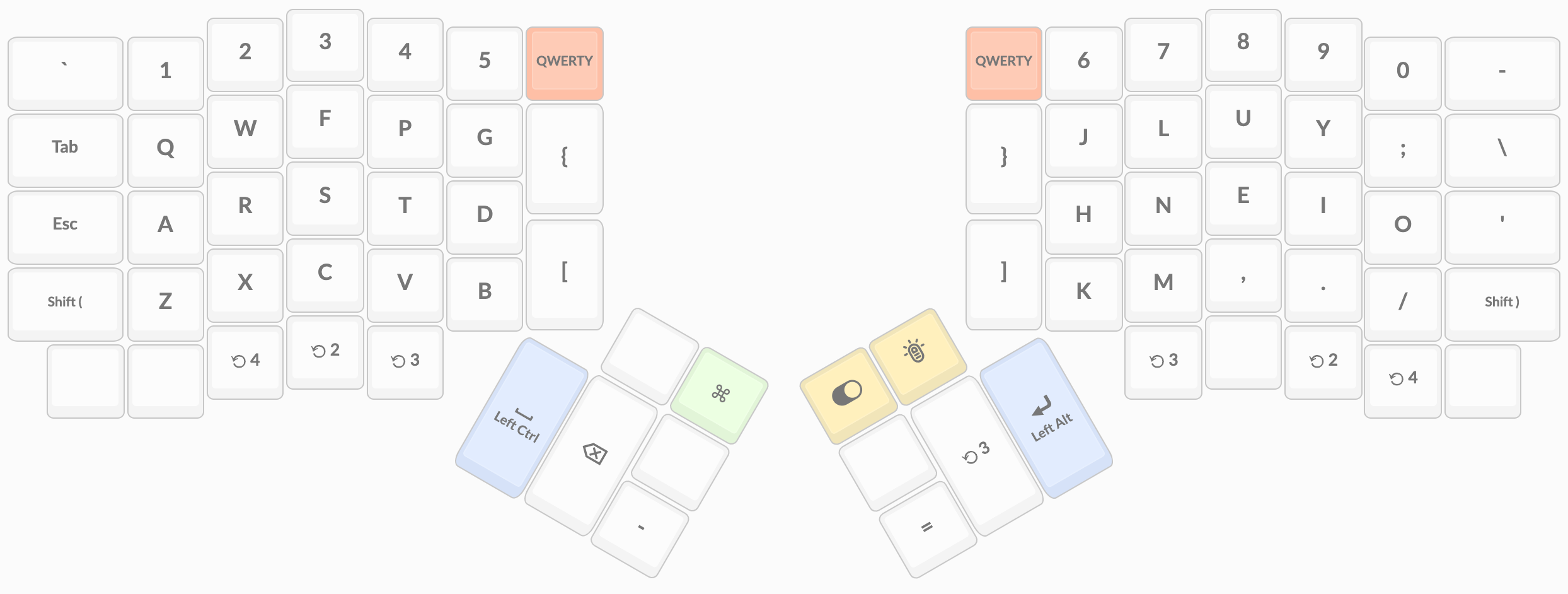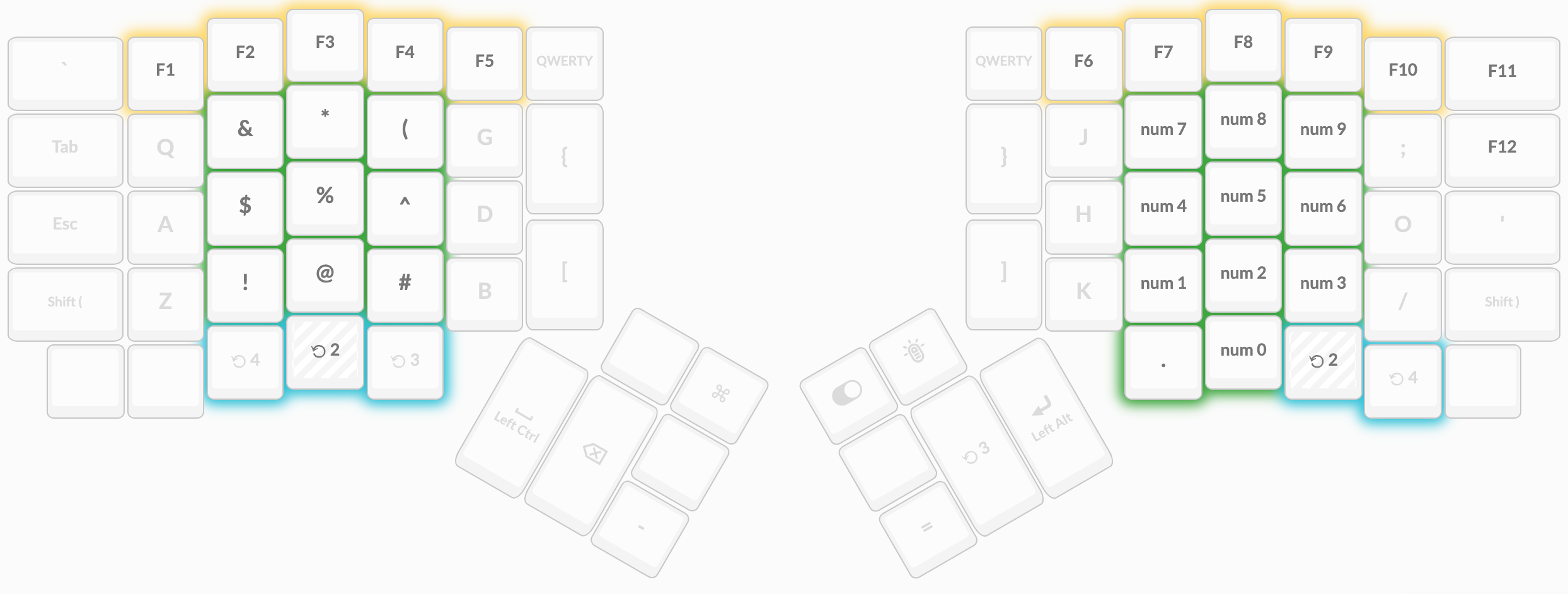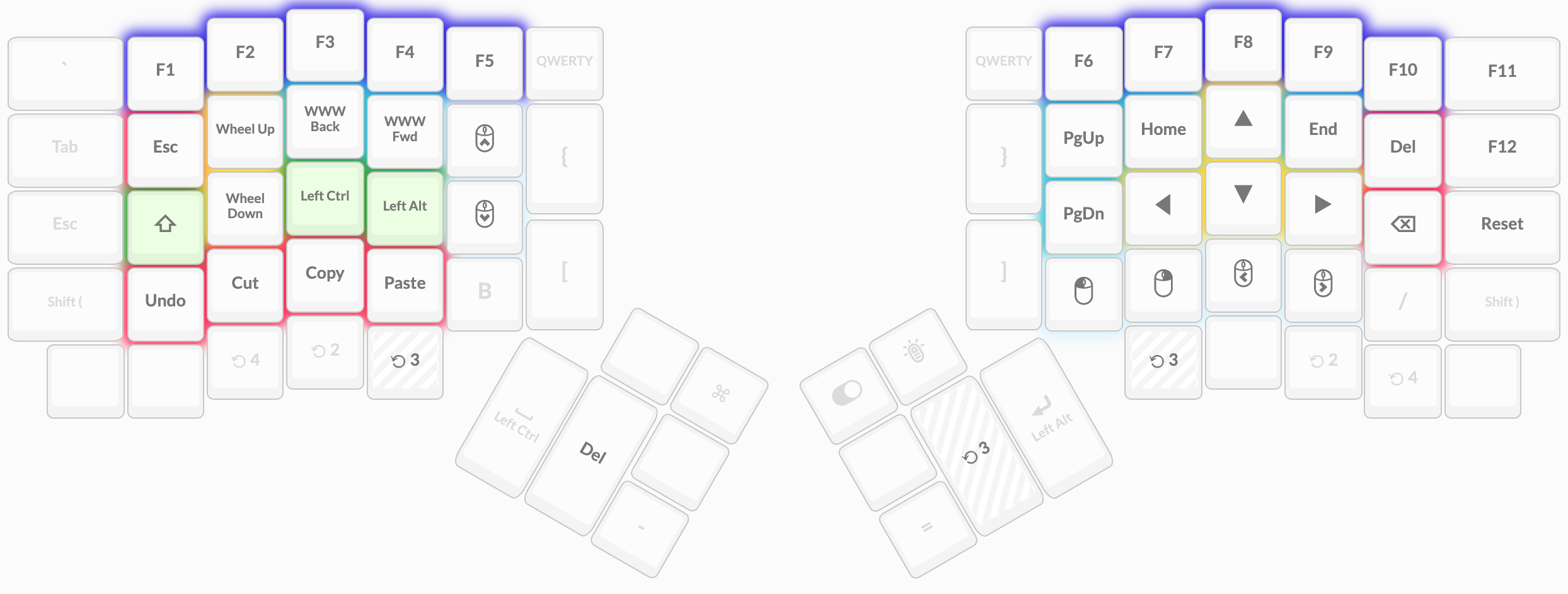Checking in with the Ergodox EZ: month 4
I’ve been using an Ergodox EZ for almost four months now. Long story short, everything is smoother than it was two months ago, but there’s a lot left to optimize.
Extend and other layers
If there’s one complaint I have about the Ergodox EZ, it’s the sheer number of keys. I still don’t have a concrete plan for half of the thumb cluster,1 the inner 1.5u keys, or much of the bottom row. This boils down to continued indecision about typing philosophy: should I stuff the base layer full of things, or go the spartan route and consign less-used keys to higher layers? I’m leaning toward minimalism but have yet to fully commit.
That’s a small quibble though, and on the whole I’m really enjoying iteratively improving my layers. The major change since month 2 has been moving Colemak to the base layer and removing the TG triggers from the inner columns; now, layer switching always starts with the thumb clusters or bottom row.

On the function layer, I’ve mapped a shifted version of the numpad to the left hand. This has remained mostly unused so far, but I hope to incorporate it into my programming routine at some point. Another thing I’m keen to try is ditching the number row and relying on my function layer’s numpad. The functionality’s been there since day 1; I just need to convince myself to switch cold turkey. I may end up removing the numbers from the base layer entirely, although I suppose that could make some passwords harder to type.2

The Extend layer has proven to be invaluable. Mass-selecting and copying or deleting text is easy with Extend-A-[IJKL]-[CP] (A maps to Shift, C maps to Copy, and P maps to Delete), and the Extend versions of cut, copy and paste are actually faster than holding the left thumb cluster for 150 milliseconds to trigger Ctrl. I’ve also implemented mouse control on the Extend layer, though I don’t have a real use case for it yet.

One of Oryx’s newest features is the ability to easily pass alt-code text with the “Hold Alt pressed” option. This is a boon for those situations where I’m typing in French. Before this feature, I had to hit Alt-MO2-1-3-0 to produce é; now it’s as simple as MO4-e. I’m not yet sure where to place all the accented e variants, but there’s plenty of room on my fourth layer to experiment.
Colemak
At this point I’m very close to my pre-Ergodox QWERTY speed of 120 words per minute, and I’ve developed enough Colemak muscle memory to blaze through simple text with a burst speed of 130–140 wpm. I’ve also taken to using Monkey Type on Master mode, which forces a restart with every mistake. The restart itself isn’t particularly helpful,3 but it serves as a reminder to prioritize accuracy, not absolute speed. A couple days ago I tried a QWERTY Monkey Type test on my MacBook Pro, and it finally struck me how much my hands had to move. QWERTY really is an unoptimized layout: what is J doing in home row anyway?
With mastery comes the desire to beat a new challenge, and accordingly I’ve been mulling over DH and DHm. I don’t find the HE bigram terribly difficult to execute on vanilla Colemak,4 but I’ve definitely noticed that I type the and and more slowly than I would on a mod. The optimization space is more constrained now that I’ve applied the easiest fix by ditching QWERTY, but there’s still room to improve. And that’s the ultimate point of the Ergodox: iteratively building a layout that’s perfect for me.
-
The recently unveiled Moonlander is pretty enviable in this regard, but I’m also got an eye on the Kyria. ↩
-
At a certain point, removing too much from the board will frustrate the purpose of using an Ergodox. Some part of me thinks I’d be better off keeping the Ergodox as a maximalist board and building a Kyria or a Gergoplex to indulge my stripped-down whims. ↩
-
In fact, Master mode is arguably detrimental, since you never get the chance to identify and correct your mistakes. ↩
-
I have no hard evidence to support this assertion, but I tend to find words containing p and b (think public) the trickiest to type. It’s all very strange to me, since b doesn’t move on Colemak. ↩